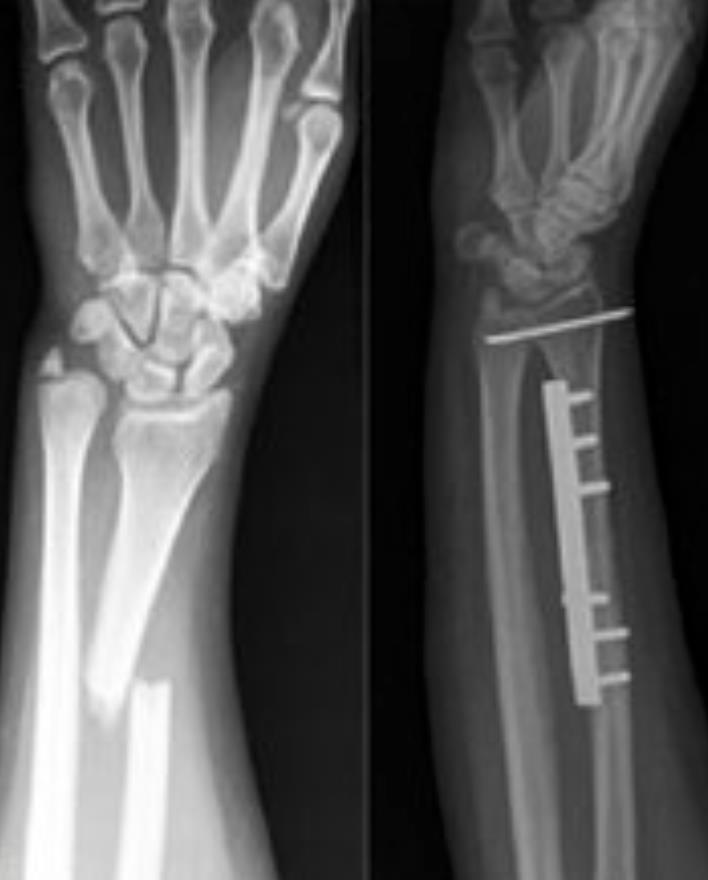
This sagging of the pelvis secondary to hip abductor weakness is known as Trendelenburg’s sign. It’s important to remember that the pelvis falls on the contralateral side to the weakness. if there is left hip abductor weakness, the pelvis will drop towards the right whenever the right foot is lifted off the ground).

If a patient has unilateral hip abductor weakness, the pelvis will drop toward the contralateral side when the leg on that side leaves the ground (i.e. In this phase, the hip abductor muscles (gluteus medius and minimus) on the opposite side to the raised leg contract to prevent the pelvis from dropping on the side of the raised leg. Assess the patient’s footwear: unequal sole wearing is suggestive of an abnormal gait.ĭuring the leg lift and swing phase of the gait cycle, all of the body’s weight is placed on the limb that is still in contact with the ground.Waddling gait: an abnormal gait caused by bilateral weakness of the hip abductor muscles, typically associated with myopathies (e.g.Trendelenburg’s gait: an abnormal gait caused by unilateral weakness of the hip abductor muscles secondary to a superior gluteal nerve lesion or L5 radiculopathy.Turning: patients with joint disease may turn slowly due to restrictions in joint range of movement or instability.Leg length: note any discrepancy which may be the cause or the result of joint pathology.Range of movement: often reduced in the context of chronic joint pathology (e.g.abnormalities in toe-off or heel strike). Gait cycle: note any abnormalities of the gait cycle (e.g.Muscle wasting: inspect for any asymmetry in the muscle bulk of the posterior compartment of the thigh and the gluteal region suggestive of disuse atrophy or a lower motor neuron lesion.Īsk the patient to walk to the end of the examination room and then turn and walk back whilst you observe their gait paying attention to:.Scars: again look for scars indicative of previous trauma or surgery.Inspect the posterior aspect of the hip joints and lower limbs, noting any abnormalities: Flexion abnormalities: fixed flexion deformity at the hip joint may suggest the presence of contractures secondary to previous trauma, inflammatory conditions or neurological disease.Inspect the lateral aspect of the hip joints and lower limbs, noting any abnormalities: Pelvic tilt: lateral pelvic tilt can be caused by scoliosis, leg length discrepancy or hip abductor weakness.fracture, degenerative joint disease, surgical removal of bone, trauma to the epiphyseal endplate prior to skeletal maturity). Leg length discrepancy: may be congenital or acquired (e.g.Quadriceps wasting: note any asymmetry in the bulk of the quadriceps muscles which may be due to disuse atrophy or a lower motor neuron lesion.effusion, inflammatory arthropathy, septic arthritis). Swelling: note any evidence of asymmetry in the size of the hip joints that may suggest unilateral swelling (e.g.Bruising: suggestive of recent trauma or surgery.Scars: note the location of scars as they may provide clues as to the patient’s previous surgical history or indicate previous joint trauma.Inspect the anterior aspect of the hip joints and lower limbs, noting any abnormalities:

analgesia).Īsk the patient to stand and turn in 90° increments as you inspect the lower limbs from each angle for evidence of pathology. Prescriptions: prescribing charts or personal prescriptions can provide useful information about the patient’s recent medications (e.g.

Walking aids: the ability to walk can be impacted by a wide range of knee, hip and ankle pathology.Look for objects or equipment on or around the patient that may provide useful insights into their medical history and current clinical status: Wasting of muscles: suggestive of disuse atrophy secondary to joint pathology or a lower motor neuron injury.Scars: may provide clues regarding previous lower limb surgery.Body habitus: obesity is a significant risk factor for joint pathology due to increased mechanical load (e.g.Perform a brief general inspection of the patient, looking for clinical signs suggestive of underlying pathology: You might also be interested in our OSCE Flashcard Collection which contains over 2000 flashcards that cover clinical examination, procedures, communication skills and data interpretation.


 0 kommentar(er)
0 kommentar(er)
